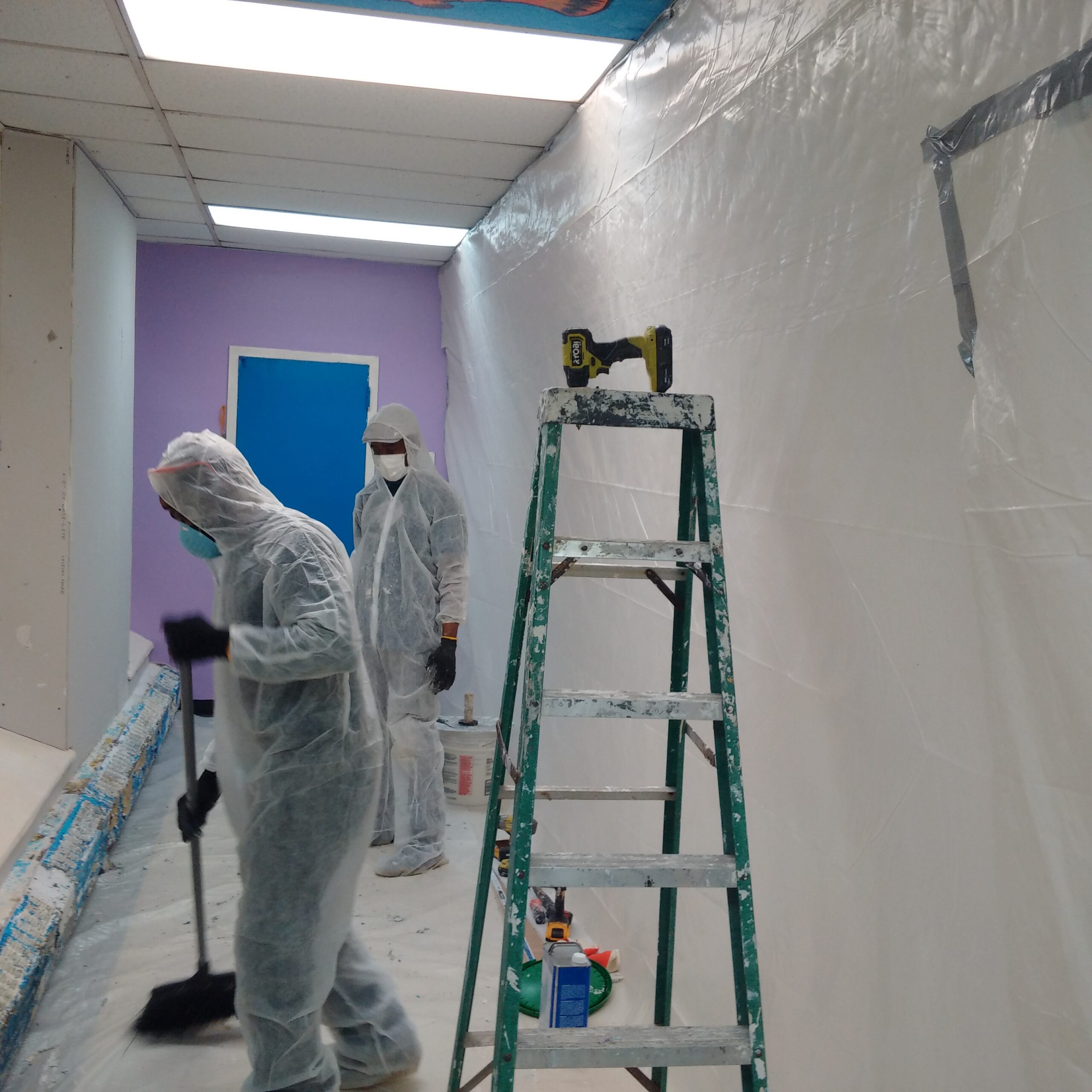Lead Removal Contractors-- Skilled Experts for Lead Reduction
Wiki Article
Finest Practices for Making Sure Safe and Detailed Lead Offense Abatement
Resolving lead infraction abatement needs a multi-faceted method to make certain both safety and compliance. It's the final clearance procedure, entailing comprehensive examinations and lab screening, that really confirms a lead-free atmosphere, making sure long-term security. How do these methods interconnect to assure extensive lead reduction?
First Assessment
Carrying out a preliminary assessment is an important initial action in lead infraction reduction. This stage encompasses an in-depth assessment of the building to recognize the visibility, level, and details locations of lead-based risks. Certified professionals, such as licensed lead examiners or run the risk of assessors, need to do a detailed site inspection, using tools like X-ray fluorescence (XRF) analyzers to precisely find and measure lead focus in paint, dirt, soil, and water.The evaluation must likewise consist of a review of the structure's history, previous reports, and any type of complaints or health concerns reported by occupants - Lead Removal Contractors. Documenting the findings diligently is necessary, as these records create the basis for creating an effective abatement approach. A comprehensive assessment likewise involves tasting and laboratory analysis, which are vital to verify the presence of lead and guide subsequent activities
Additionally, it is necessary to communicate the outcomes transparently to all stakeholders, consisting of homeowner, occupants, and regulatory authorities. By ensuring that the initial analysis is carried out with precision and rigor, experts can lay a solid structure for a targeted and effective lead reduction process, eventually securing public health and making certain conformity with governing standards.
Correct Containment
Correct control is vital to protect against the spread of lead contaminants during reduction activities. Properly handling containment lessens the threat of lead dirt and debris moving to non-work locations, thereby guarding both the environment and people outside the immediate work zone.
Regular evaluations of the containment location are required to examine for violations or weaknesses in the obstacle. Any kind of identified issues must be quickly resolved to maintain the stability of the control. By sticking to these techniques, abatement projects can efficiently control lead contamination and mitigate involved health and wellness risks.
Worker Defense
Making sure worker security is paramount throughout lead abatement projects to protect against occupational exposure to harmful lead particles. Important measures include the use of individual safety tools (PPE) such as respirators, handwear covers, and full-body matches particularly developed to block lead dirt and fumes. Employees ought to go through extensive training on the correct usage and upkeep of PPE, consisting of in shape screening for respirators to make sure maximum efficiency.Engineering controls, imp source such as regional exhaust air flow systems, are vital in reducing air-borne lead concentrations in the work setting. Management controls ought to also be executed, consisting of limiting the duration of direct exposure and rotating employees to lower specific direct exposure times. Regular medical monitoring and biological monitoring are vital for early discovery of lead absorption, making it possible for prompt intervention and therapy.
Moreover, developing a decontamination method is important. Employees should adhere to rigid decontamination treatments before breaks and at the end of their shift to stop lead dirt from being lugged outside the workplace. This includes thorough hand and face cleaning with lead-specific cleaner and changing out of infected apparel.
Precise Clean-up
Preserving a safe job environment extends beyond employee protection and incorporates thorough clean-up to guarantee lead particles are completely eliminated from the site. The process of meticulous clean-up is critical in stopping the recontamination of the abated location and securing both present and future occupants.To achieve a thorough cleanup, all job locations must be methodically sanitized. This includes making use of specialized HEPA (High-Efficiency Particulate Air) vacuum cleansers and wet-wiping methods to record and eliminate fine lead dust that might have chosen surfaces. It is imperative to cleanse all straight surfaces, consisting of floorings, window sills, and kitchen counters, as well as vertical surface areas that might have caught lead particles.
Workers should wear appropriate individual protective tools (PPE) throughout cleanup to avoid direct exposure to residual lead dirt. Used cleansing materials such as wipes, sponges, and wipe heads should be thrown away based on unsafe waste disposal laws.

Final Clearance
Final clearance is the crucial wrapping up phase of lead reduction that establishes whether the website is secure for reoccupation. This essential step entails detailed examination and screening to validate that all lead dangers have actually been effectively gotten rid of. The procedure begins with an aesthetic evaluation by a see this licensed lead-based paint inspector or danger assessor to make certain no visible dust or debris stays. This is complied with by accumulating dust wipe examples from numerous surface areas, including floorings, windowsills, and various other straight surfaces. Lead Removal Contractors.
Final clearance testing not just secures future passengers but additionally ensures conformity with neighborhood, state, and federal policies. Furthermore, it works as a recorded validation of the abatement specialist's adherence to market finest techniques. Making certain a detailed and effective last clearance is essential in safeguarding public wellness and cultivating depend on in the abatement process.
Verdict
Making sure risk-free and comprehensive lead offense abatement requires a diverse method encompassing initial evaluations with innovative detection techniques, efficient control methods, rigid worker defense methods, and thorough cleaning procedures. The last clearance phase, including comprehensive examinations and lab screening, is critical to confirm compliance with EPA requirements. Adherence to these best techniques ensures a secure setting for residents, reduces wellness dangers, and upholds regulative requirements, therefore advertising public wellness and safety in lead-affected areas.Report this wiki page